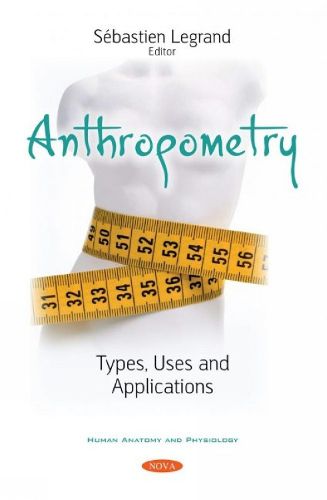Readings Newsletter
Become a Readings Member to make your shopping experience even easier.
Sign in or sign up for free!
You’re not far away from qualifying for FREE standard shipping within Australia
You’ve qualified for FREE standard shipping within Australia
The cart is loading…






In this book, the science of anthropometry, which deals with measurements of human size, shape and proportion, is examined in the context of obesity and overweight, common problems in developed countries and developing countries alike. An estimated 39% of the world’s adult population were overweight and 13% were obese over the past 3 decades, and these problems can cause diseases like type 2 diabetes mellitus (T2DM), cardiovascular diseases (CVD), and several cancers. While body mass index (BMI) is commonly used as a health risk phenotype, it has several limitations because BMI does not accurately depict different components of body composition and is therefore unable to predict the prognostic effect of individual tissues. Other anthropometric measurements, such as waist circumference (WC), waist to hip ratio (WHR), and waist to height ratio (WHtR) each have their advantages and disadvantages. As such, in Chapter 1, different novel anthropometric parameters and cardiovascular risk factors among obesity adults are compared and evaluated. Chapter 2 describes a study of children aged 0-12 years conducted in the Middle Senegal River Valley (MISOES) in 1957-1958. This study was based on representative samples of children in urban and rural areas and included measurements of weight, height, arm circumference, and more. These measurements were compared with American standards and showed an overwhelming anthropometric deficit compared with standards. This study is examined in the context of other studies conducted in the region as well as in connection with economic development in the valley. Chapter 3 describes the various methods of assessing body fat and their application for obese individuals to predict the risk of Coronary Heart Disease (CHD), and Chapter 4 reviews the effect of different modalities of physical exercise on anthropometric measurements and body composition in different populations of older adults.
$9.00 standard shipping within Australia
FREE standard shipping within Australia for orders over $100.00
Express & International shipping calculated at checkout
In this book, the science of anthropometry, which deals with measurements of human size, shape and proportion, is examined in the context of obesity and overweight, common problems in developed countries and developing countries alike. An estimated 39% of the world’s adult population were overweight and 13% were obese over the past 3 decades, and these problems can cause diseases like type 2 diabetes mellitus (T2DM), cardiovascular diseases (CVD), and several cancers. While body mass index (BMI) is commonly used as a health risk phenotype, it has several limitations because BMI does not accurately depict different components of body composition and is therefore unable to predict the prognostic effect of individual tissues. Other anthropometric measurements, such as waist circumference (WC), waist to hip ratio (WHR), and waist to height ratio (WHtR) each have their advantages and disadvantages. As such, in Chapter 1, different novel anthropometric parameters and cardiovascular risk factors among obesity adults are compared and evaluated. Chapter 2 describes a study of children aged 0-12 years conducted in the Middle Senegal River Valley (MISOES) in 1957-1958. This study was based on representative samples of children in urban and rural areas and included measurements of weight, height, arm circumference, and more. These measurements were compared with American standards and showed an overwhelming anthropometric deficit compared with standards. This study is examined in the context of other studies conducted in the region as well as in connection with economic development in the valley. Chapter 3 describes the various methods of assessing body fat and their application for obese individuals to predict the risk of Coronary Heart Disease (CHD), and Chapter 4 reviews the effect of different modalities of physical exercise on anthropometric measurements and body composition in different populations of older adults.